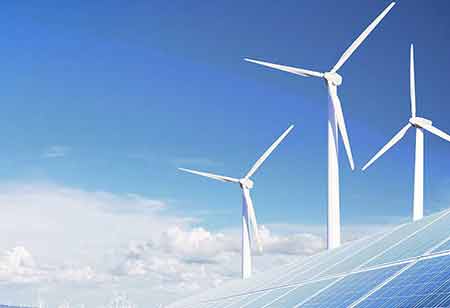Thank you for Subscribing to Energy Business Review Weekly Brief
Tidal Energy: Potential Energy Source
During the 20th century, engineers cultivated ways to use tidal movement to generate

By
Energy Business Review | Monday, January 24, 2022
Stay ahead of the industry with exclusive feature stories on the top companies, expert insights and the latest news delivered straight to your inbox. Subscribe today.
Tidal energy is renewable energy powered by ocean tides and currents' natural rise and fall. Some of these technologies include turbines and paddles.
Fremont, CA: Tidal energy is generated by the ocean waters' surges during tides' rise and fall. Therefore, tidal energy is a renewable source of energy.
During the 20th century, engineers cultivated ways to use tidal movement to generate electricity in areas with a significant tidal range—the difference in area between high and low tides. All methods employ special generators to transform tidal energy into electricity.
Tidal energy production is still at its beginning. The amount of power generated so far has been small. There are not many commercial-sized tidal power plants operating in the world.
There are lawful concerns about underwater land ownership and environmental influence in the United States. Investors are not eager about tidal energy because there is no strong assurance that it will make money or advantage consumers.
Engineers are working on upgrading the technology of tidal energy generators to increase the amount of energy they produce, decrease their impact on the environment, and find a way to earn a profit for energy companies.
Tidal Energy Generators
There are currently three ways to get tidal energy: tidal streams, barrages, and tidal lagoons.
For most tidal energy generators, turbines are positioned in tidal streams. A tidal stream is a fast-flowing part of water formed by tides. A turbine is a machine that carries energy from a flow of fluid. Fluid can be air (wind) and liquid (water).
Since water is much denser than air, tidal energy is more powerful than wind energy. Also, unlike wind, tides are predictable and stable. Therefore, where tidal generators are used, they generate a steady, dependable stream of electricity.
Placing turbines in tidal streams is complex since the machines are large and disturb the tide they are trying to harness. The environmental influence could be severe, based on the size of the turbine and the site of the tidal stream.
Check Out This : Autotech Outlook
Turbines are most effective in shallow water. This generates more energy and enables ships to navigate around the turbines. A tidal generator's turbine blades rotate slowly, preventing marine life from getting caught in the system.
The global first tidal power station was built in 2007 at Strangford Lough in Northern Ireland. The turbines are positioned in a narrow strait between the Strangford Lough inlet and the Irish Sea. The tide can move across the strait at 4 meters (13 feet) per second.
Another type of tidal energy generator employs a large dam named a barrage. With a barrage, water can flow over the top or use turbines in the dam since the dam is low. Barrages can be built across tidal rivers, bays, and estuaries.
Turbines inside the barrage exploit the power of tides. Similarly, a river dam exploits the power of a river. The barrage gates are unlocked as the tide rises. At upper tide, the barrage gates close, creating a pool or tidal lagoon. The water is then discharged through the barrage's turbines, creating energy at a rate that engineers can control.
The environmental influence of a barrage system can be quite significant. The land in the tidal range is entirely disrupted. The variation in water level in the tidal lagoon might harm plant and animal life. The salinity inside the tidal lagoon decreases, which changes the organisms that can live there.
As with dams over rivers, fish are blocked into or out of the tidal lagoon. Turbines move swiftly in barrages, and marine animals can be caught in the blades. With their food source circumscribed, birds might find diverse places to migrate.
A barrage is a much more costly tidal energy generator than a single turbine. Even though there are no fuel costs, barrages involve more construction and machines. Unlike single turbines, barrages also need constant supervision to adjust power output.
The ultimate type of tidal energy generator includes the building of tidal lagoons. A tidal lagoon is a part of ocean water partly enclosed by a natural or manmade barrier. Tidal lagoons might also be bayous and have freshwater emptying into them.
A tidal energy generator employing tidal lagoons would function much like a barrage. However, unlike barrages, tidal lagoons can be constructed along the natural coastline. A tidal lagoon power plant could also produce continuous power. The turbines operate as the lagoon is filling and emptying.
The environmental influence of tidal lagoons is minimal. The lagoons can be built with natural materials like rock. They would emerge as a low breakwater (sea wall) at low tide and be submerged at high tide.
Animals could swim around the structure, and smaller organisms could swim inside it. Large predators like sharks would not be skillful to penetrate the lagoon, so smaller fish would probably thrive. In addition, birds would likely flock to the area.
But the energy output from generators employing tidal lagoons is likely low. There are no functioning examples yet. China is constructing a tidal lagoon power plant at the Yalu River, near its border with North Korea. A private company is also planning a small tidal lagoon power plant in Swansea Bay, Wales.






